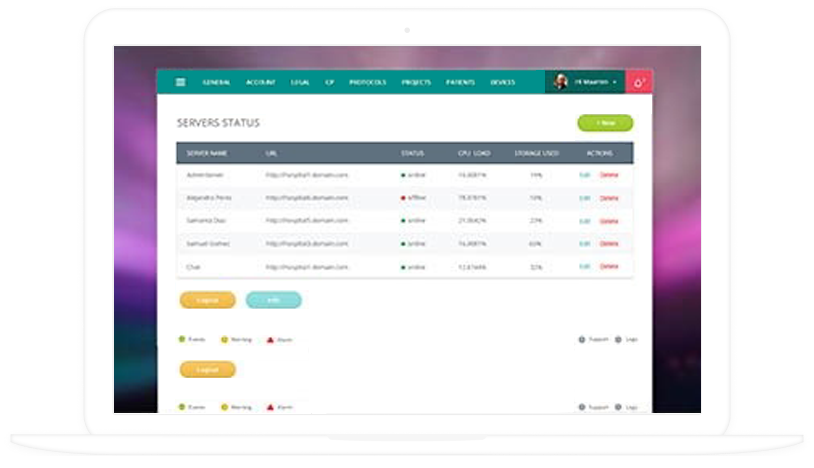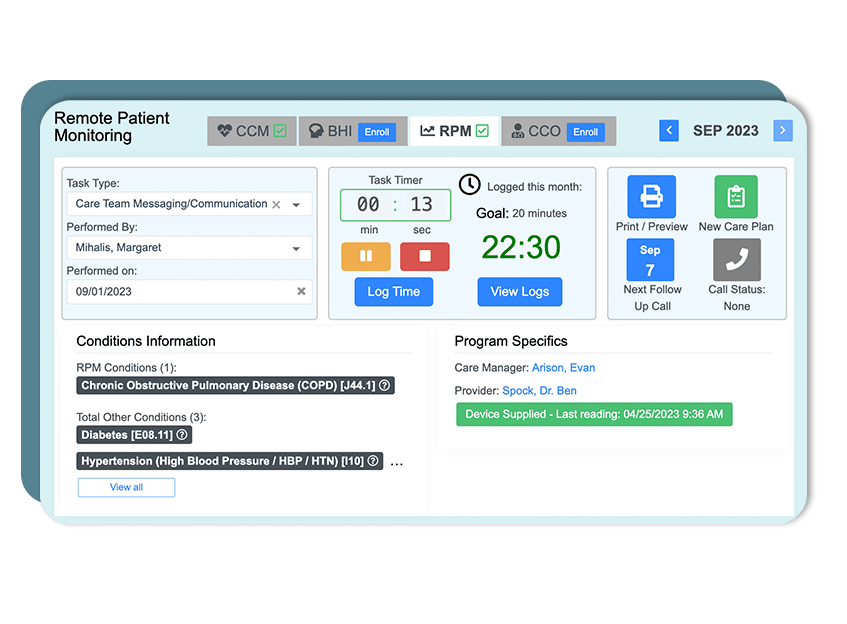The Future of Medical Care: Remote Client Keeping An Eye On Streamlined
As health care proceeds to advance, one area that holds tremendous promise is remote patient surveillance. With a focus on improving person outcomes and streamlining healthcare delivery, remote monitoring is positioned to reinvent the sector.
Benefits of Remote Client Monitoring
Remote individual tracking offers a wide range of benefits for both health care providers and individuals alike. One considerable benefit is the capability to continuously keep track of patients' important indicators and health and wellness information from another location. This real-time monitoring enables healthcare companies to detect any concerning patterns or adjustments immediately, leading to very early treatments and possibly protecting against clinical emergency situations. Furthermore, remote individual monitoring enhances the overall top quality of treatment by giving a more holistic and thorough sight of patients' health condition beyond standard in-person visits.
Furthermore, remote individual surveillance can lead to enhanced individual results and complete satisfaction. Clients can take pleasure in the ease of receiving care in the convenience of their own homes while still understanding that their wellness is being very closely monitored. This can result in enhanced individual engagement and adherence to therapy strategies, inevitably bring about far better wellness end results. Furthermore, remote monitoring can reduce the need for frequent hospital gos to, reducing healthcare costs for both suppliers and individuals. On the whole, the benefits of remote individual monitoring are clear, making it an important tool in modern healthcare distribution.
Modern Technology Driving Remote Tracking
In the realm of modern-day health care, technical improvements play a critical role in driving the development and performance of remote person tracking. The integration of cutting-edge innovations such as wearable tools, mobile applications, and cloud-based platforms has actually transformed the method healthcare suppliers remotely check and manage person wellness - rpm software. These technologies allow continual real-time tracking of vital indications, drug adherence, and other important wellness data, enabling for prompt treatments and personalized care strategies
One trick technology driving remote surveillance is the Internet of Things (IoT), which makes it possible for smooth connectivity between clinical tools and healthcare systems. IoT devices such as smartwatches and wireless sensing units accumulate and send person data to centralized platforms, promoting remote surveillance from anywhere in the world. Expert system (AI) and artificial intelligence algorithms additionally improve remote surveillance by assessing vast quantities of patient data to discover patterns, anticipate health and wellness patterns, and sharp doctor to possible concerns.
Influence On Medical Care Shipment
With the assimilation of innovative modern technologies driving remote patient surveillance, the influence on healthcare delivery is coming to be transformative and increasingly extensive. Remote person surveillance enables doctor to provide more tailored and aggressive care to people, resulting in improved wellness end results and decreased medical facility admissions. By remotely tracking essential indications, signs and symptoms, and medication adherence, medical care experts can intervene early, preventing difficulties and improving the overall top quality of treatment.
Additionally, remote monitoring boosts access to medical care services, specifically for individuals in rural or underserved areas. People can get continuous surveillance and support from their homes, removing the demand for constant in-person check outs. This not just saves time and lowers expenses for both people and healthcare centers yet also lessens the risk of exposure to transmittable diseases, a critical consideration in the existing medical care landscape.
Additionally, remote individual monitoring allows medical care companies to far better allot sources and focus on treatment based on real-time data. By recognizing high-risk patients and stepping in without delay, healthcare shipment ends up being extra efficient and effective, inevitably leading to a more sustainable and patient-centered health care system.
Improving Patient Outcomes

In addition, RPM enables for positive monitoring of persistent problems, lowering the chance of intense worsenings and health center readmissions. Individuals benefit from enhanced benefit and comfort, as they can obtain treatment in their very own homes while remaining attached to their doctor. This continuous tracking not only boosts client complete satisfaction yet additionally fosters a sense of empowerment and engagement in their very own health and wellness administration.
Future Trends in Remote Monitoring
Welcoming sophisticated innovations in remote patient tracking is forming the future landscape of health care delivery. The future patterns in remote monitoring are anticipated to transform the way health care is offered, making it extra patient-centric and efficient. One substantial trend is the raised use of wearable devices and sensing units to collect real-time information, enabling doctor to keep an eye on clients continually without the need for constant in-person gos to. These tools can track important indicators, medication adherence, and task degrees, offering a thorough view of the person's health condition.

Moreover, telehealth systems are becoming a lot more innovative, allowing for online appointments, remote diagnosis, and remote individual checking all in one integrated system (remote patient monitoring platform). This holistic technique to remote surveillance is streamlining healthcare shipment, improving person complete satisfaction, and eventually, boosting overall quality of care
Final Thought
Finally, remote person surveillance offers various advantages in medical care distribution, driven by advancements in technology. It has the potential to improve client results and reinvent the method health care is provided. Future patterns in remote tracking will continue to shape the landscape of healthcare, providing possibilities for even more reliable and customized client care.
Remote patient surveillance offers a wide variety of benefits for both healthcare companies and clients alike. Additionally, remote person surveillance improves the overall top quality of treatment by offering an extra holistic and thorough visit this page sight of clients' wellness condition beyond typical in-person sees.
Furthermore, remote patient surveillance can lead to improved person results and complete satisfaction. Remote patient tracking allows medical care service providers to offer more proactive and individualized care to individuals, leading to improved wellness outcomes and minimized medical facility admissions. Remote person monitoring (RPM) plays a substantial role in enhancing patient end results by providing constant, real-time data that allows medical care service providers to step in quickly and adjust treatment plans as required.